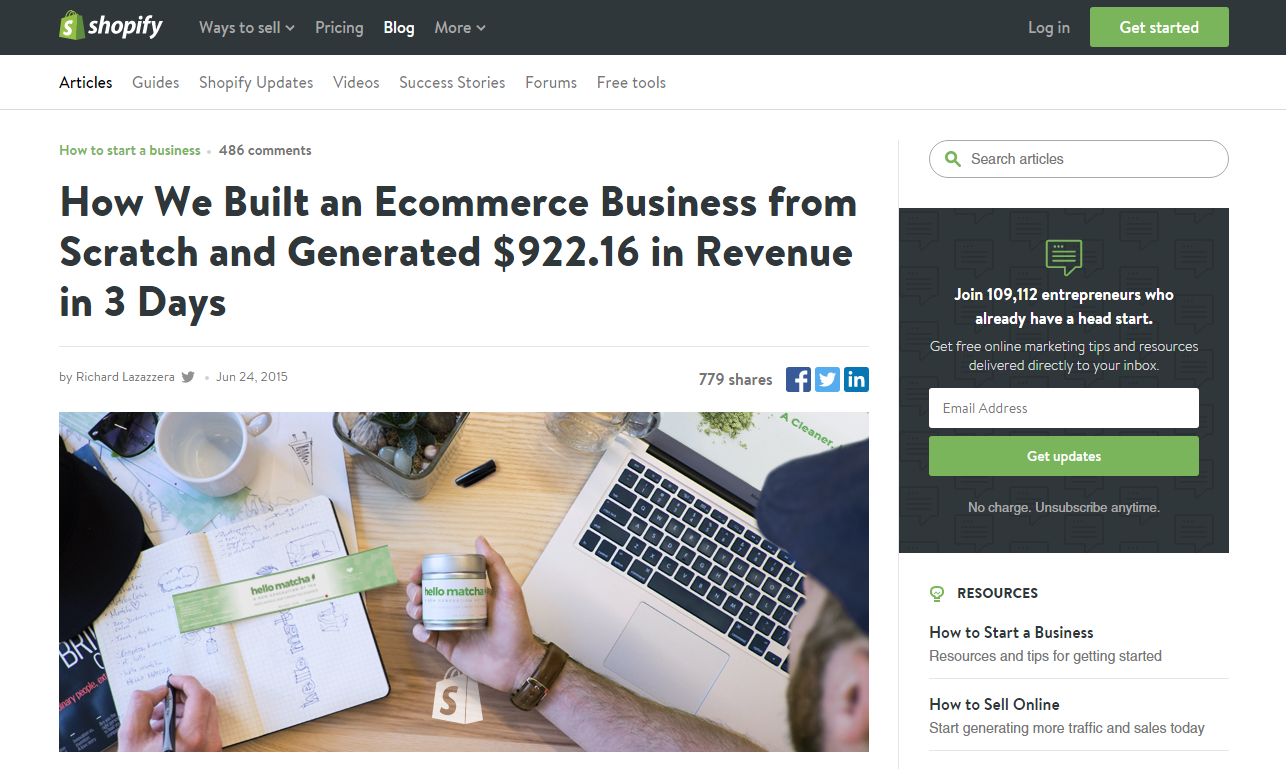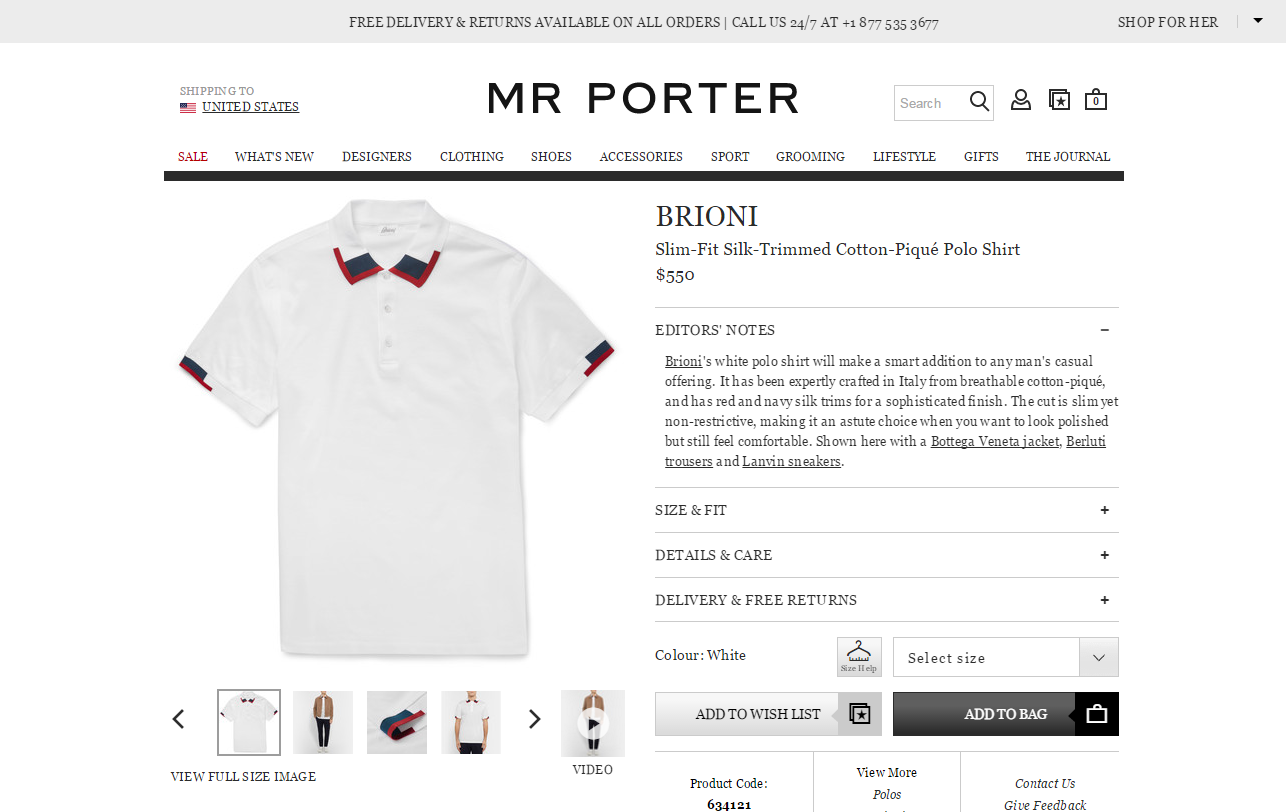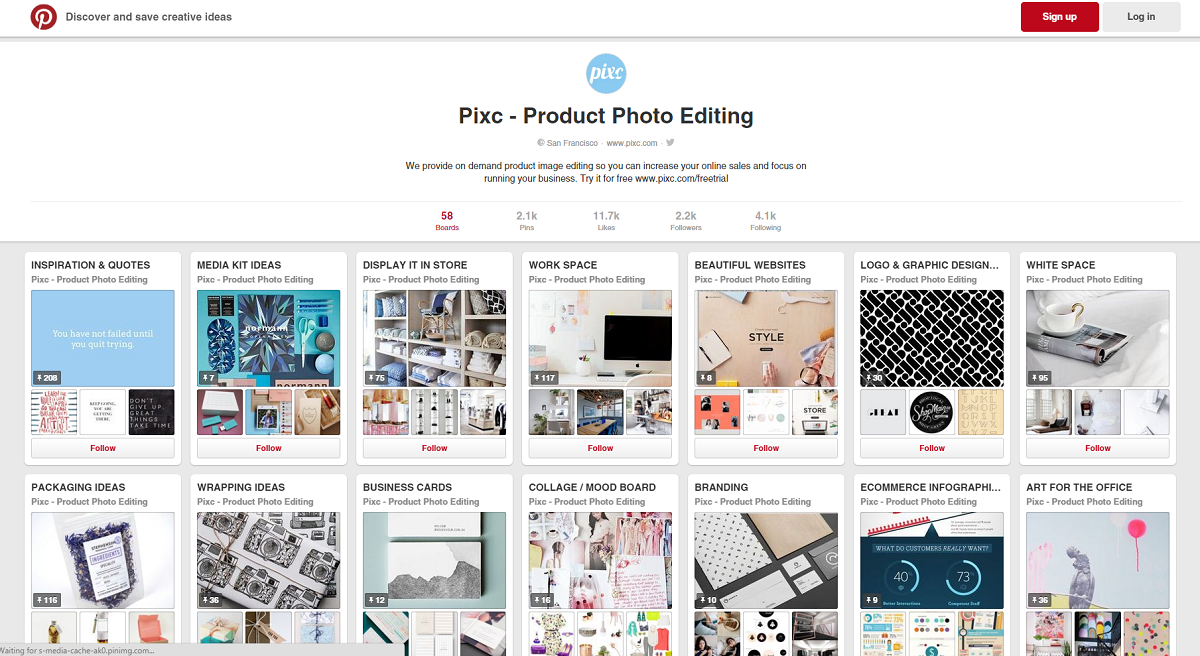Do you have a product you want to sell online, but you’re not sure how to get started creating an ecommerce shop?
Don’t worry! Here are seven easy steps to start an online store.
1. Choose a product and a market before you start an online store
Choosing a good product is an important decision when you create a shop. The product and market you choose should be something you are first and foremost passionate about. You will be selling this product and marketing to your customers every day.
Make sure you conduct a detailed market analysis and take a close look at your competition. You don’t want to be in a crowded market unless you have a unique offering that will help set you apart from your competitors.
Check out this case study where Shopify’s team researched a niche and built a business from scratch.

2. Select an ecommerce website builder, domain name and payment gateway
Whatever you do, don’t get a web developer to build you an online store from scratch.
There are lots of choices when it comes to ecommerce website builders. Some of the best website builders are Bigcommerce, Shopify, SquareSpace, Weebly, Wix, and Bigcartel. For most purposes, you won’t go wrong with any of these.
There are other platforms that are open source such as PrestaShop and WooCommerce. Being open source, they have a lot more plugins and widgets and allow for more functionality and manipulation if you have a web developer or know how to code.

With most store builders you can simply select a template, customize it and tweak the settings. One of the best features about store builders is you can get something online within less than a week. There’s no need to spend months slaving away over a website! Get your store set up quickly and you can move on.
3. Take great product photos and create awesome product descriptions
Your product photos and product descriptions are the most important components in your online store. When a visitor lands on your shop page, the product photos are the main things that will draw them in.
You should provide multiple product images, including photos of your product on a plain white background and photos of your product in context. By providing multiple photos of your product from different angles, you allow the customer to visualize the product before they buy it.

With the product description, you want to give the customer details they are unable to see from the photo. Make sure you include dimensions, material composition (what kind of fabric, for example) and anything else the customer is unable to feel or smell.
The more detail you can provide, the better it is not only for the customer but for you too. You will receive fewer customer enquiries and more people will purchase the product straight away since you’ve provided all the information. This goes for returns too — there is nothing worse than receiving something that doesn’t look like the photos online.
So, make sure your product photos and descriptions are clear and include all the details for the customer. They’ll thank you — and you’ll thank yourself.
4. Set up your social media campaign and email marketing lists
It’s not easy selling online and getting traffic to your online store, so I do suggest you start your social media campaign as soon as possible, if not even before you launch your online store.

Facebook, Twitter, Instagram and Pinterest are the best social media platforms for eCommerce. They’re all so different and each has pros and cons. Check out some of our guides on how to use these platforms:
- 5 Tips to Use Facebook for eCommerce
- 6 Steps to Leverage Twitter for Your Online Store
- 10 Tips on How to Use Instagram for eCommerce
- How to Use Pinterest to Increase Sales
An email marketing list is also a great way to build an audience you can remarket to. Don’t rely on social media, as each platform is always changing their rules about who they show your content to. Having a mailing list allows you to reach out directly to your customers.
I recommend Mailchimp for your email marketing. You might also want to use SumoMe, which will help you build your mailing list from new site visits.
5. Offer amazing customer service
Customer service can make or break a sale.
Set up a default email address such as ‘hello@storename.com’ and make sure you or someone else replies to all customer enquiries in eight hours or less if possible.
It’s important that you read enquiries and reply to customers, especially when you’re first starting out. This will help you understand their needs and feedback. Tony Hsieh of Zappos used to read every single customer service email that would come in. This helped shape Zappos into what it is today.
As you grow, you can set up a customer service team or use a service like Influx, which provides customer service on demand.

6. Plan your shipping policy
If you can, offer free shipping and free returns. It can be expensive, but you can look it at as a marketing expense.
By offering free shipping and returns, you are making it just that much easier for the customer to buy when they’re mulling over a purchase.
If you can’t offer free shipping and returns, you can always offer a flat rate (e.g., $9.95 for any order size) or free shipping over a certain cart size (e.g., free shipping when you spend $150). This can ultimately increase your cart size.

Make sure your shipping information is clearly stated on your website. You can place the shipping rate (if it is free or a flat rate) at the top corner of your website, and include a page link in the footer linking to more detailed information.
The other thing to note is fast shipping. There is nothing more magical than ordering something online at night and being offered same-day or next-day delivery.
There have been times I have ordered something that I completely forgot about and by the time the package arrived, I wasn’t interested in it or realised I could live without it so I sent it back. Fast shipping matters!
7. Track your success with Key Performance Indicators
When you start an online store, it’s important to measure your success if you want your business to keep humming along.
When you start out, you should create a list of key performance indicators (KPIs) such as number of visitors to your online store, order numbers per week and number of repeat customers. Once you have some idea of the metrics or goals you want to hit, you’ll have a clearer path of moving forward. If you’re not hitting your goals, don’t worry. You may just need to tweak your marketing plan.
Most ecommerce store builders offer basic analytics that let you track the number of visitors to your online store, as well as how many people added an item to the cart and either chose to purchase it or not.

I also suggest you install Google Analytics. This will give you detailed information about where your visitors came from and other goals and metrics you want to achieve.
Get started with your online store today
I hope this checklist will help you create your online store quickly and enjoyably! Don’t procrastinate — get started today.
Francis of Assisi once said, ‘Start by doing what’s necessary; then do what’s possible; and suddenly you are doing the impossible’.








